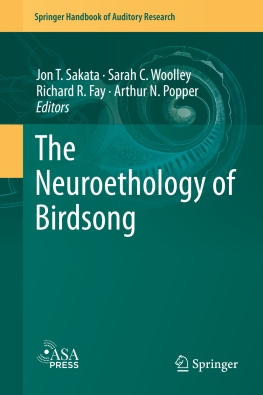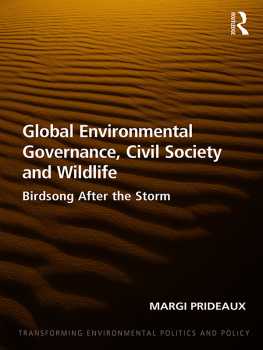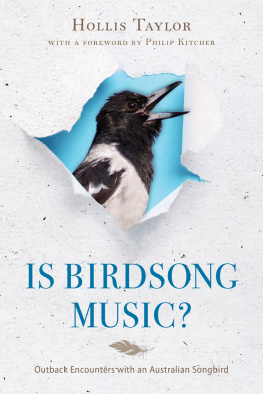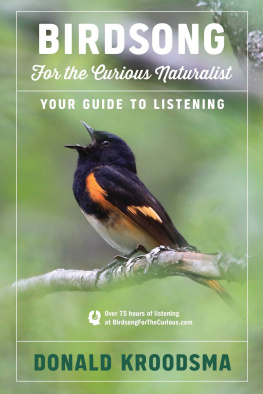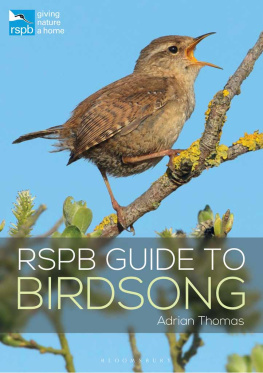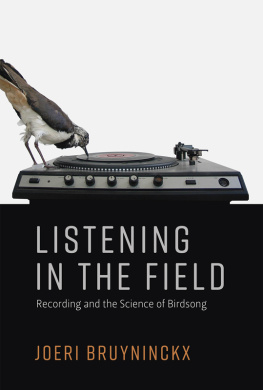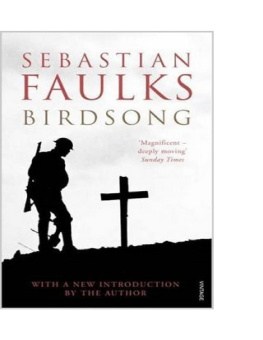Jon T. Sakata - The Neuroethology of Birdsong
Here you can read online Jon T. Sakata - The Neuroethology of Birdsong full text of the book (entire story) in english for free. Download pdf and epub, get meaning, cover and reviews about this ebook. year: 2020, publisher: Springer International Publishing, genre: Romance novel. Description of the work, (preface) as well as reviews are available. Best literature library LitArk.com created for fans of good reading and offers a wide selection of genres:
Romance novel
Science fiction
Adventure
Detective
Science
History
Home and family
Prose
Art
Politics
Computer
Non-fiction
Religion
Business
Children
Humor
Choose a favorite category and find really read worthwhile books. Enjoy immersion in the world of imagination, feel the emotions of the characters or learn something new for yourself, make an fascinating discovery.
- Book:The Neuroethology of Birdsong
- Author:
- Publisher:Springer International Publishing
- Genre:
- Year:2020
- Rating:4 / 5
- Favourites:Add to favourites
- Your mark:
- 80
- 1
- 2
- 3
- 4
- 5
The Neuroethology of Birdsong: summary, description and annotation
We offer to read an annotation, description, summary or preface (depends on what the author of the book "The Neuroethology of Birdsong" wrote himself). If you haven't found the necessary information about the book — write in the comments, we will try to find it.
The Neuroethology of Birdsong — read online for free the complete book (whole text) full work
Below is the text of the book, divided by pages. System saving the place of the last page read, allows you to conveniently read the book "The Neuroethology of Birdsong" online for free, without having to search again every time where you left off. Put a bookmark, and you can go to the page where you finished reading at any time.
Font size:
Interval:
Bookmark:
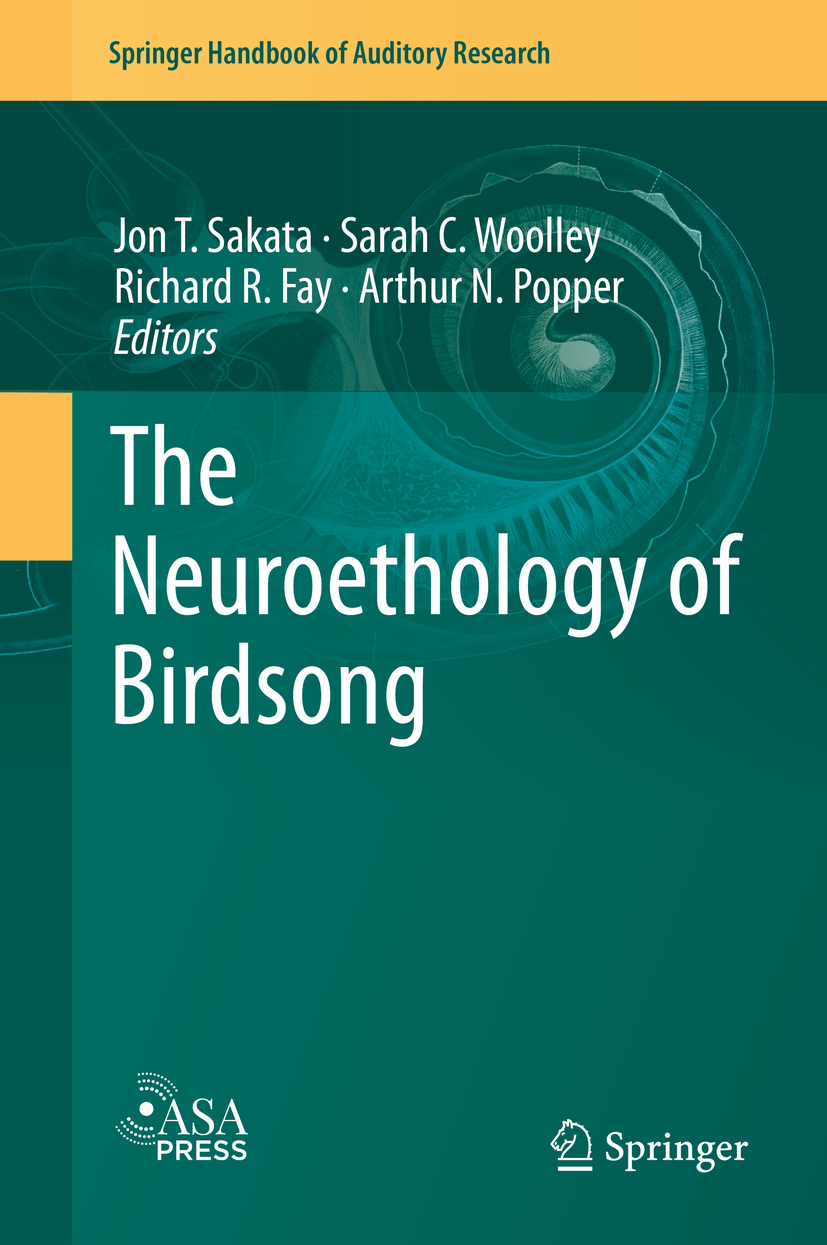
More information about this series at http://www.springer.com/series/2506
The ASA Press
ASA Press, which represents a collaboration between the Acoustical Society of America and Springer Nature, is dedicated to encouraging the publication of important new books as well as the distribution of classic titles in acoustics. These titles, published under a dual ASA Press/Springer imprint, are intended to reflect the full range of research in acoustics. ASA Press titles can include all types of books that Springer publishes, and may appear in any appropriate Springer book series.
Editorial Board
Mark F. Hamilton (Chair), University of Texas at Austin
James Cottingham, Coe College
Timothy F. Duda, Woods Hole Oceanographic Institution
Robin Glosemeyer Petrone, Threshold Acoustics
William M. Hartmann (Ex Officio), Michigan State University
Darlene R. Ketten, Boston University
James F. Lynch (Ex Officio), Woods Hole Oceanographic Institution
Philip L. Marston, Washington State University
Arthur N. Popper (Ex Officio), University of Maryland
Christine H. Shadle, Haskins Laboratories
G. Christopher Stecker, Boys Town National Research Hospital
Stephen C. Thompson, Pennsylvania State University
Ning Xiang, Rensselaer Polytechnic Institute



This Springer imprint is published by the registered company Springer Nature Switzerland AG
The registered company address is: Gewerbestrasse 11, 6330 Cham, Switzerland

This volume is dedicated to Allison Doupe, an inspiration and mentor to scientists all over the world. She was instrumental in spurring a generation of neuroethologists to understand the neural basis of avian communication and to reveal parallels between human and avian communication.
On 27 December 1928 a group of scientists and engineers met at Bell Telephone Laboratories in New York City to discuss organizing a society dedicated to the field of acoustics. Plans developed rapidly, and the Acoustical Society of America (ASA) held its first meeting on 1011 May 1929 with a charter membership of about 450. Today, ASA has a worldwide membership of 7000.
The scope of this new society incorporated a broad range of technical areas that continues to be reflected in ASAs present-day endeavors. Today, ASA serves the interests of its members and the acoustics community in all branches of acoustics, both theoretical and applied. To achieve this goal, ASA has established technical committees charged with keeping abreast of the developments and needs of membership in specialized fields, as well as identifying new ones as they develop.
The Technical Committees include acoustical oceanography, animal bioacoustics, architectural acoustics, biomedical acoustics, engineering acoustics, musical acoustics, noise, physical acoustics, psychological and physiological acoustics, signal processing in acoustics, speech communication, structural acoustics and vibration, and underwater acoustics. This diversity is one of the Societys unique and strongest assets since it so strongly fosters and encourages cross-disciplinary learning, collaboration, and interactions.
ASA publications and meetings incorporate the diversity of these Technical Committees. In particular, publications play a major role in the Society.The Journal of the Acoustical Society of America(JASA) includes contributed papers and patent reviews.JASA Express Letters(JASA-EL) andProceedings of Meetings on Acoustics(POMA) are online, open-access publications, offering rapid publication.Acoustics Today, published quarterly, is a popular open-access magazine. Other key features of ASAs publishing program include books, reprints of classic acoustics texts, and videos. ASAs biannual meetings offer opportunities for attendees to share information, with strong support throughout the career continuum, from students to retirees. Meetings incorporate many opportunities for professional and social interactions, and attendees find the personal contacts a rewarding experience. These experiences result in building a robust network of fellow scientists and engineers, many of whom become lifelong friends and colleagues.
Font size:
Interval:
Bookmark:
Similar books «The Neuroethology of Birdsong»
Look at similar books to The Neuroethology of Birdsong. We have selected literature similar in name and meaning in the hope of providing readers with more options to find new, interesting, not yet read works.
Discussion, reviews of the book The Neuroethology of Birdsong and just readers' own opinions. Leave your comments, write what you think about the work, its meaning or the main characters. Specify what exactly you liked and what you didn't like, and why you think so.

